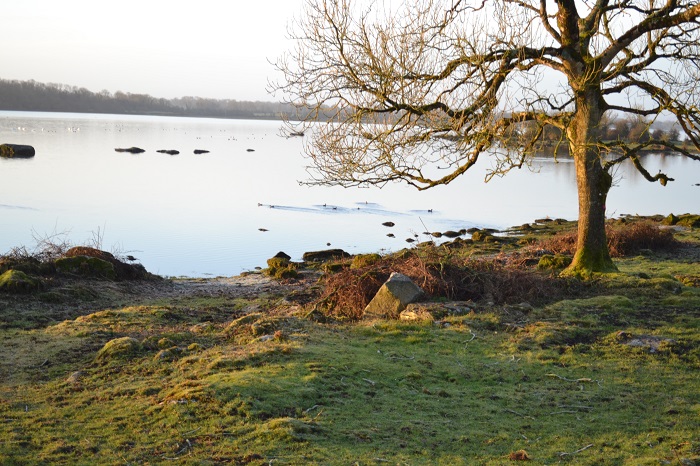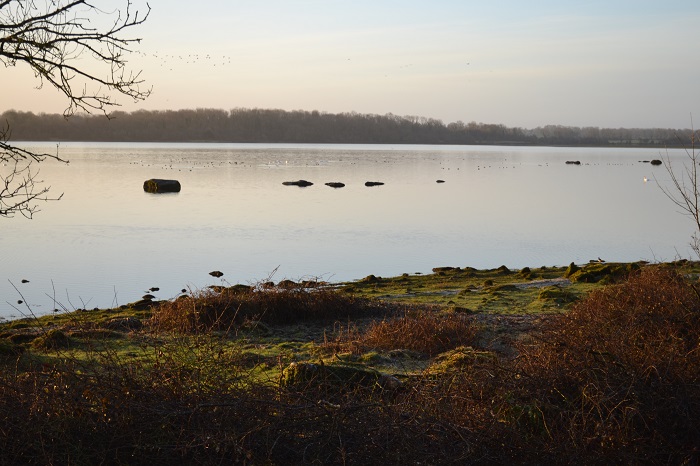01 February 2025
A celebration of our wetlands

World Wetlands Day will take place tomorrow, February 2. In this article, Environment Specialist at Teagasc, Ivan Kelly shares details of the importance of wetlands, the key wetlands present in Ireland, and activities planned as part of this awareness raising day.
Each year on February 2nd, communities around the globe come together to celebrate World Wetlands Day. This important day aims to raise awareness about the crucial role wetlands play in our environment and promotes public stewardship of these vital ecosystems. It also commemorates the anniversary of the Ramsar Convention on Wetlands, an international treaty adopted in 1971 in Ramsar, Iran. Ireland is one of 172 Contracting Parties committed to promoting wetland conservation and wise use, and Teagasc is a member of the Ramsar Wetlands Committee.
Understanding Wetlands
Wetlands are unique landscapes where water significantly influences soil, plant life, and animal communities. They include floodplains, wet grasslands, lakes, rivers, ponds, swamps, bogs, and coastal habitats. In Ireland, wetlands cover a substantial portion of the land due to its geology and temperate climate. These areas are not only beautiful but also among the most productive environments on Earth, providing essential ecosystem services.
The Ramsar Convention aims to protect all wetlands, with a focus on identifying and designating Ramsar Sites of International Importance. Ireland has designated 45 such sites.
Wetland Surveys Ireland and Foss Environmental Consulting have collaboratively developed a Map of Irish Wetlands, which details over 13,600 wetlands across the country. This map can be accessed at Wetland Surveys and Foss Environmental.
The Benefits of Wetlands
Wetlands provide vital benefits to both people and wildlife, supporting approximately 40% of all species and storing about 30% of the world’s land-based carbon, thus aiding in climate change mitigation. They also filter pollutants and regulate water flow, reducing flood risks.
However, to maintain these benefits, wetlands must function naturally. Despite their significance, many wetlands in Ireland are degraded. From 1990 to 2018, the country lost 258,800 hectares of wetlands—an area larger than County Roscommon.1
Globally, nearly 90% of wetlands have degraded since the 1700s, with losses occurring at three times the rate of deforestation, primarily (62%) due to drainage. Ireland was identified as having substantial wetland loss when compared with other countries.2
Specific Types of Wetlands
Callows
Callows are flood-meadows adjacent to large rivers, particularly the Shannon. These areas naturally fertilise through annual winter flooding, enriching the soil for summer grazing or hay production. The biodiversity in these meadows is vital for bird species like the corncrake, which relies on undisturbed conditions for nesting.
Salt Marshes
Located along the coast, salt marshes are invaluable flood-meadows that support agriculture, especially in western Ireland, where adjacent land may be less fertile. These marshes not only store carbon but also serve as crucial flood defences while providing habitats for various wildlife.
Wet Grasslands
Wet grasslands are rich in biodiversity, supporting a variety of specialist plants and animals. Wildflowers such as ragged robin and buttercups attract pollinators, while the moist environment is ideal for frogs and other wildlife. However, excessive use of fertilisers can diminish this biodiversity, threatening the delicate balance of these ecosystems.
Ponds
Ponds serve as critical habitats for a wide range of species, including frogs, newts, and dragonflies. They are essential breeding grounds for wading birds like redshanks and snipes and can be easily created on farms where water is available, enhancing local biodiversity.
Turloughs
Unique to Ireland, turloughs are seasonal floodplains that can be submerged for months. These areas are crucial for maintaining soil fertility and supporting diverse ecosystems. However, they are vulnerable to drainage and nutrient runoff, which can disrupt their delicate balance and affect the flora and fauna that depend on them.

Rahasane Turlough, Co. Galway
Fens and Swamps
Fens are peat-forming wetlands fed by alkaline groundwater and are home to a variety of species, including rare orchids. Like bogs, they are essential for carbon storage and flood mitigation. Unfortunately, they face threats from drainage and chemical runoff, which can harm their unique plant communities.
Watercourses
Small drains and streams can significantly impact larger water bodies. Pollution from these smaller systems can affect fish and other wildlife in nearby rivers, highlighting the interconnectedness of our water systems and the importance of safeguarding every aspect of the wetland ecosystem.
Actions for Farmers
Farmers are key stewards of wetlands, and their actions can significantly influence these ecosystems. They can:
- Identify and map wetland areas on their farms.
- Avoid drainage practices harmful to wetlands.
- Limit nutrient and herbicide use near wetlands.
- Establish buffer zones around wetland areas.
- Manage neglected ponds to enhance biodiversity.
- Practice low-impact grazing.
- Obtain necessary permissions for activities on wetland sites.
Legislation and Protection
Wetlands are protected by various environmental laws, including the Birds and Habitats Directives. Draining or reclaiming wetlands requires planning permission for areas larger than 0.1 hectares or for activities that may significantly impact the environment. Understanding these regulations is crucial for farmers and landowners to effectively protect our wetlands.
Join the Celebration
As World Wetlands Day 2025 approaches, numerous events are planned across Ireland to celebrate and raise public awareness about the importance of wetlands. Over 40 events will take place nationwide on or around February 2nd, including talks, birdwatching opportunities, conservation management activities, and cultural events. These initiatives aim to foster appreciation for wetlands and inspire action to protect them for future generations.
For more information on events happening throughout Ireland, visit the Irish Wetlands website.
References:
- Ireland’s Environment, An Integrated Assessment – 2020 – EPA1
- Fluet-Chouinard et al. – Nature – 20232
